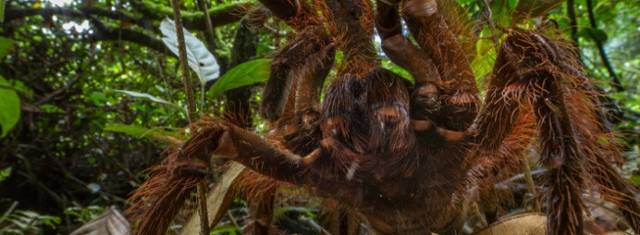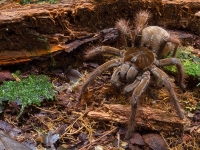Miscellaneous
A dead spider raises ethical questions
Does a single life matter

theraphosa (Source: Piotr Naskrecki)
USPA NEWS -
The death of animals is often accepted as a part of the research process. Are there times when such deaths can be avoided? More importantly, when should they be avoided. These questions must be answered before research can continue in an ethical manner.
The ethical questions raised by science are many and in some cases it is difficult to tell the difference between right and wrong. Take for instance, Piotr Naskrecki. A month or so ago, he wrote about finding a rather large spider in South America. Then later on NPR he reported receiving tons of hate mail about his care of said spider. The spider is now deceased and its corpse resides in a museum. While I consider the death threats to be nothing short of ignorant bullying, the entire situation has me considering the ethical decision to kill this animal for the pursuit of science. Had this spider been a puppy the world would be up in arms but a spider's death is largely ignored.
Let us consider what would have happened if Mr Naskrecki has killed a human for the sake of research. He would have been ostracized by the scientific community as a whole and probably would have faced criminal charges. Yet the killing of an animal for the purpose of research is acceptable. If that animal had been a puppy he would have received criminal charges in nearly every state in the United States but because it was an arachnid, it is ignored. Rats are killed for research on a daily basis and very few people are even remotely bothered by this. The killing of a bug is considered to be a good thing in most communities. So why is one life considered more valuable than another when research is the goal?
The ethical questions that come to mind are these:
Could the spider have been studied without killing it. ie. brought home and allowed to live out its life until death by natural causes happened?
Was the killing of the spider necessary for the safety of the scientist or perhaps for the specific tests that were desired?
Was it verified that this animal was not an endangered species?
What knowledge was expected to be obtained by this spider´s death? Is that knowledge expected to save the lives of other spiders and/or humans?
Was the decision to kill this animal an arbitrary decision or one that was thought out?
Could the spider have been studied without killing it. ie. brought home and allowed to live out its life until death by natural causes happened?
Was the killing of the spider necessary for the safety of the scientist or perhaps for the specific tests that were desired?
Was it verified that this animal was not an endangered species?
What knowledge was expected to be obtained by this spider´s death? Is that knowledge expected to save the lives of other spiders and/or humans?
Was the decision to kill this animal an arbitrary decision or one that was thought out?
Once these questions are answered then we can more forward and get to the research. If the answers are not satisfying, then perhaps the death of the arachnid should be delayed. Personally I am not apposed to the taking of life for research purposes. As a child I use to collect butterflies for my collection and later was involved in medical research with Johns Hopkins. I truly understand the uses and needs for animal research. What I am apposed to is the double standard being in place for determining the hows and whys of such killings. After reading Mr. Naskrecki´s “Involuntary Bioslaughter and Why a Spider is Dead“ I could not help but think that maybe less science was being done and more ego stroking and resume building.
more information: https://thesmallermajority.com/2014/10/08/the-sound-of-little-hooves-in-the-night/
Liability for this article lies with the author, who also holds the copyright. Editorial content from USPA may be quoted on other websites as long as the quote comprises no more than 5% of the entire text, is marked as such and the source is named (via hyperlink).






